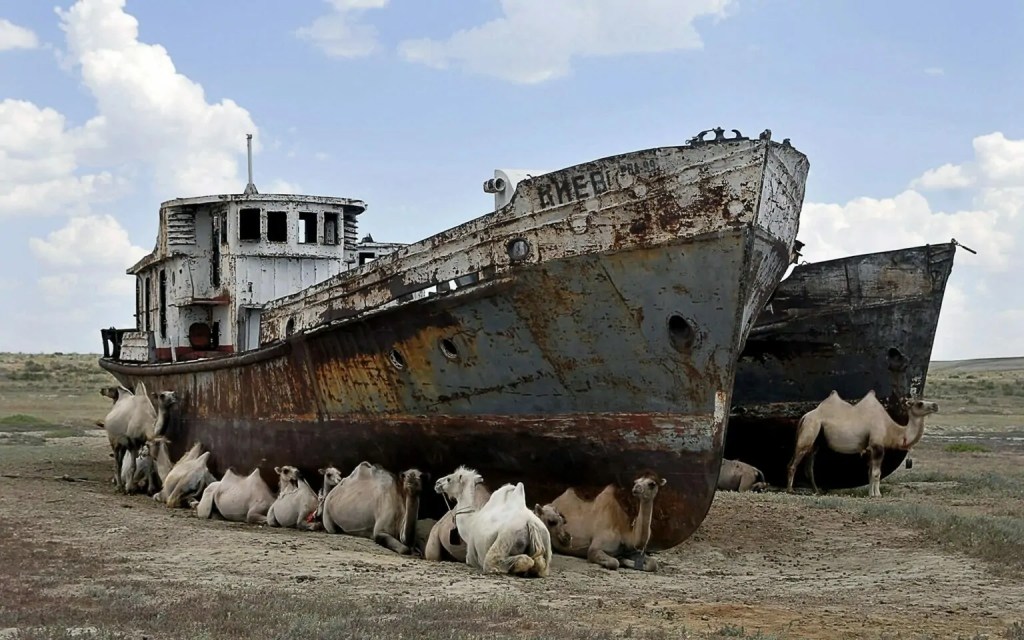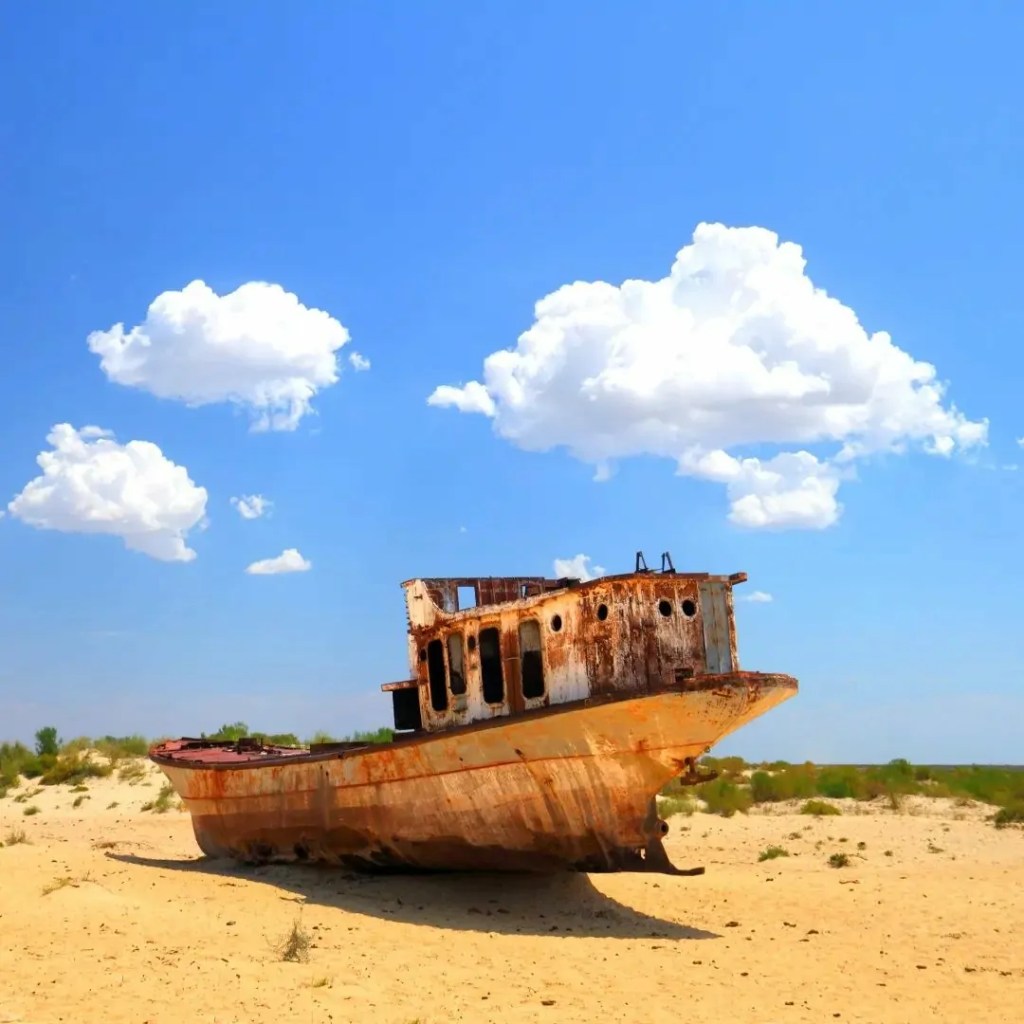The Aral Sea, hidden between Kazakhstan and Uzbekistan in the heart of Central Asia, previously spread across a massive area of 26,000 square miles, proudly asserting its place as the world’s fourth-largest inland water body only three decades ago.It was a breathtaking sight that drew the attention of great conquerors like Alexander the Great, who marveled at the vastness of this ancient sea.
On the other hand, the Aral Sea is now a mere shadow of its former self, reduced to a bare fraction, a measly 10% of its original extent, and sadly divided into two lesser remains.

This extraordinary metamorphosis can be attributed to human actions, demonstrating humans’ enormous environmental impact.The Soviet government chose to reroute the waters of two rivers that initially fed the Aral Sea to irrigate enormous cotton and rice crops that prospered in the area throughout the 1960s.
They had no idea that their decision would set in motion a chain of events that would quickly unravel the magnificence of the sea. As the sea began to retreat at an alarming rate, the repercussions were quick and terrible. By the 1980s, it had lost half of its former volume, leaving a trail of destruction in its wake.Once-thriving villages that relied on plentiful fishing resources were on the verge of collapse.A depressing spectacle of rusted hulls and collapsing infrastructure replaced the vibrant ports that had once dotted the shoreline, their bustling activity quiet.
The Aral Sea, once a sign of energy, was now the site of a tragedy, garnering it the ominous moniker “Desert of Ghost Ships.”

The consequences of the Aral Sea’s disappearance extend far beyond human activity. The ecological ramifications have been profound and devastating. The seafloor exposure has resulted in the emission of harmful dust loaded with salt, insecticides, and other poisonous compounds into the atmosphere.As a result, the region is currently dealing with several serious health challenges, including an alarming increase in cancer cases and respiratory diseases. The gradual decline of the Aral Sea has taken a terrible toll on both the population and the delicate natural balance.
Efforts to restore the Aral Sea have been made over the years, with varying degrees of success. Over the last decade, the construction of a dam on the Kazakh side of the sea has contributed to a minor increase in the water level in the northern half of the sea. On the other hand, the southern portion remains desolate, a barren wasteland with little possibility of rehabilitation.

The history of the Aral Sea serves as a heartbreaking reminder, a cautionary story, alerting us about the irrevocable environmental damage that human activities can cause. It serves as a reminder of our decisions’ far-reaching and long-lasting implications, pushing us to tread more wisely and responsibly on this fragile world we call home.








